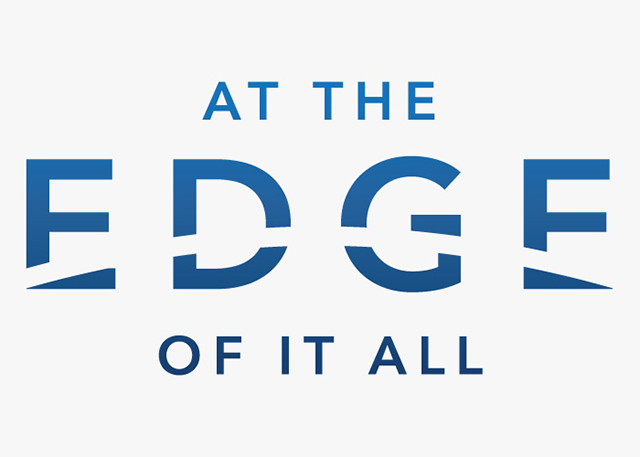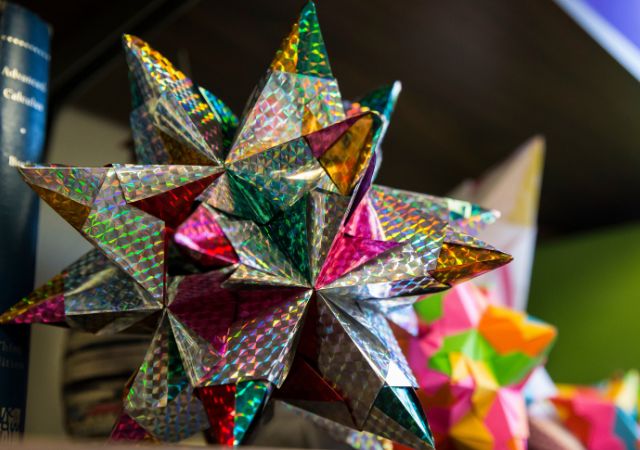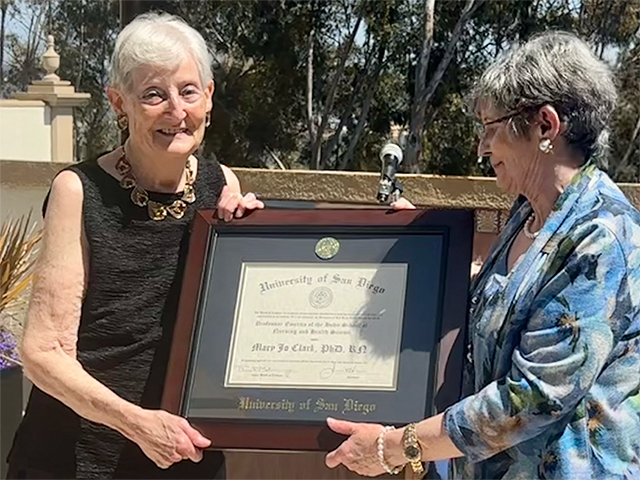USD Social Innovation Showcase (Week 2): Student Teams Increase Impact Through Innovation
The Global Social Innovation Challenge (GSIC) is coming to campus in June. Each Monday, leading up to the first big step, the USD Social Innovation Showcase on Wednesday, April 25, we're introducing Center for Peace and Commerce’s socially innovative teams who address challenges and ideate solutions for social change via the 17 United Nations Sustainable Development Goals.
In this second installment, we're spotlighting six teams. In this spotlight, there are four teams who are pursuing projects under Goal 17, Partnerships for Goals; one team connected to two goals, 14 and 15, Life Below Water and Life on Land respectively; and one was for Goal 6, Clean Water and Sanitation.
Team 7: Sonder (Goal 17)
Team Members: Isabelle Ashraf '19 (undergraduate business marketing), Becca Lancaster '19 (undergraduate International Business).
Challenge: A lack of communication across college campuses regarding existing organizations, projects and resources. This lack of communication prevents the campus community from empowering one another and uniting to achieve similar goals. Great projects fail due to insufficient knowledge and engagement while campus resources and funds go unused.
Suggested Solution: Sonder is a social innovation-focused social media platform to be used by students, faculty and administrators that focuses on connecting like-minded individuals and providing them with easy, centralized access to campus resources and allowing existing initiatives a platform to market themselves.
Team 8: Puente y Coma (17)
Team Member: Ana Sofia Sada '18 (undergraduate Organizational Psychology)
Challenge: Sada, a student at Tecnologico de Monterrey in Mexico who studied abroad at USD in Fall 2017, wants to build a corporate socially responsible model that is relevant to Monterrey, Mexico nonprofits and corporations. A lack of nonprofit-corporate partnerships is a problem that hasn't been addressed enough. Sada's project wants to address the low social responsibility culture and lack of know-how for corporate social responsibility and ways to eliminate the problem of high costs and low support from the government.
Suggested Solution: To produce a plan of action in which there can be a meaningful coordination between nonprofit organizations and small and medium enterprises to create a win-win situation for both of their needs.
Team 9: Xenophobia (17)
Team Members: Bay Truong '18 (Finance), Dylan Zuccherino and Anthony Rivera (both non-USD team members).
Challenge: Xenophobia affects global partnership opportunities. Xenophobia, described by this team as "a negative attitude towards, or fear of, individuals or groups of individuals in some sense different (real or imagined) from themselves or the group which they belong. Xenophobia considerably raises the level of discrimination of people and attacks on foreigners, strains partnerships such as NAFTA and other agreements, lowers the quality of life and it has an economic impact.
Suggested Solution: The group offers solutions at the macro and micro level. Macro improvements include relaxing visa laws for tourism, a multinational organization should leverage its influence to promote the UN SDG and there should be an increase in the development of public transportation to promote intercontinental travel. At the micro level, there should be legislation created to promote individual travel as well as an increase in multicultural education and interaction, beginning at the K-12 levels.
Team 10: Gigs for Change (17)
Team Members: Rebecca Montoya '19 (graduate student, Nonprofit), Mitchell Medrano, Emilio Flores, Sarah Krueger.
Challenge: There is an underuse of proven music therapy for substance abuse and trauma cases. Only 14.7 percent of substance abuse treatment centers offer music programs as a form of treatment. Only one percent of San Diego County's 2-1-1 database of 6,000 nonprofit and government programs reference music services. Musicians maintain a nine percent unemployment rate and have limited access to health insurance.
Suggested Solution: The goal of Gigs for Change, a nonprofit music agency, is to make the healing power of music accessible to service organizations who lack resources or networks to access it. Also, this can create paid jobs for locally underemployed artists.
Team 11: Safe Water Movement (6)
Team Members: David Vesey '17 (MS Nursing Informatics), Tanya Arora '18 (graduate student, MS in Cyber Security).
Challenge: Water is a precious commodity and a necessity for life, but not every water source provides purity and high quality for optimum wellness. Harmful substances, such as metals or bacteria, can contaminate the water and turn it into a major health risk for all. All around the world, unsafe water leads to insecurity and anxiety about what we put into our bodies.
Suggested Solution(s): This project can bring more awareness to the issue of safe water. Ways to increase safety include better control meeting the standards and regulations by governments and water supply companies; more awareness to people and teach them about safe water and non-pollution; find alternatives to get rid of waste; improved installation, maintenance and monitoring of pipes, water treatment facilities and other water cleaning services; more affordable and reusable devices to test water quality so less-developed countries can afford them; financing developing countries more to have safe water supply; and for more people to go green, especially regarding energy, pesticides and fertilizers.
Team 12: Middle Alphabet (14-15)
Team Member: Nicole Maston (graduate student, Business).
Challenge: The problem focuses on the Tijuana Watershed, which is located on the U.S.-Mexico border, and the bi-national impact of sewage in this area. Six million people in both the U.S. and Mexico are affected by this issue. In 2017 alone, more than 150 million gallons of raw sewage, toxic chemicals and trash washed into the ocean. The contaminated water poisons wildlife, causes disease and viruses, which can spread. It resulted in the closure of local beaches.
Suggested Solution(s): Creating solutions starts by engaging both the U.S. and Mexico governments to work together, create a long-term partnership and plans that can be executed. Public funding is needed and accountability is crucial to make sure funds are used appropriately. By creating value propositions, private funding can occur. One idea is to build a redundant system that is capable of handling high volume, including a diversion system and cisterns.
Stay up-to-date with all of USD's competing teams in the Global Social Innovation Challenge. Support your fellow Toreros throughout the challenge and on April 25, join these social innovators as they showcase their social ventures. Be sure to secure your seat!
Week 1 Teams Story (6 teams featured)
Contact:
USD News Center
news@sandiego.edu
(619) 260-4681




